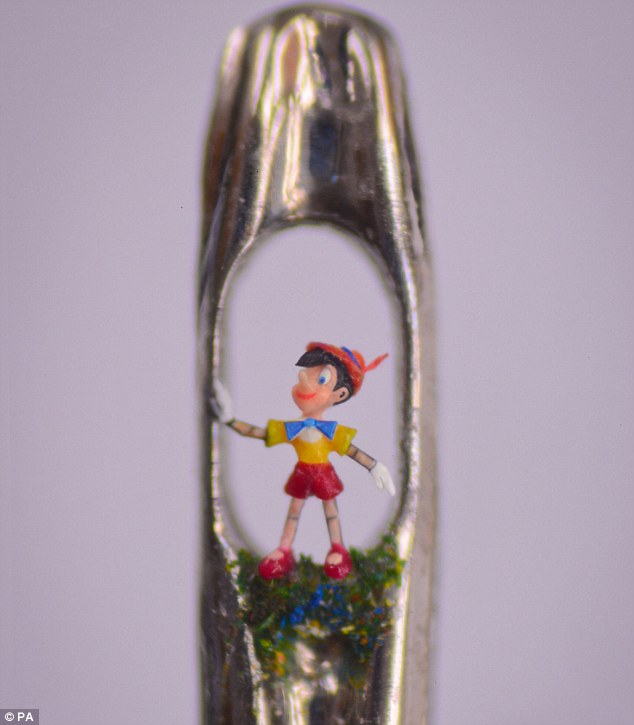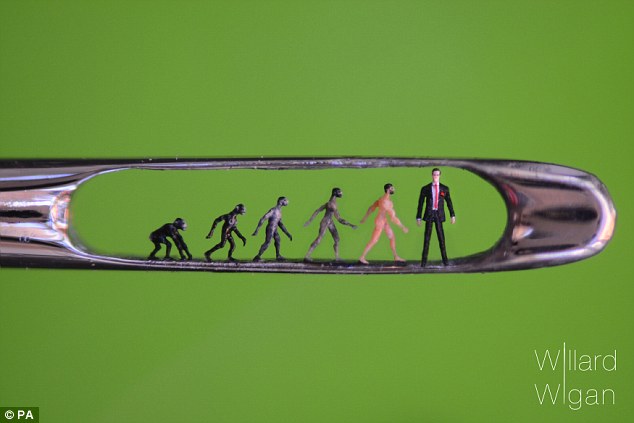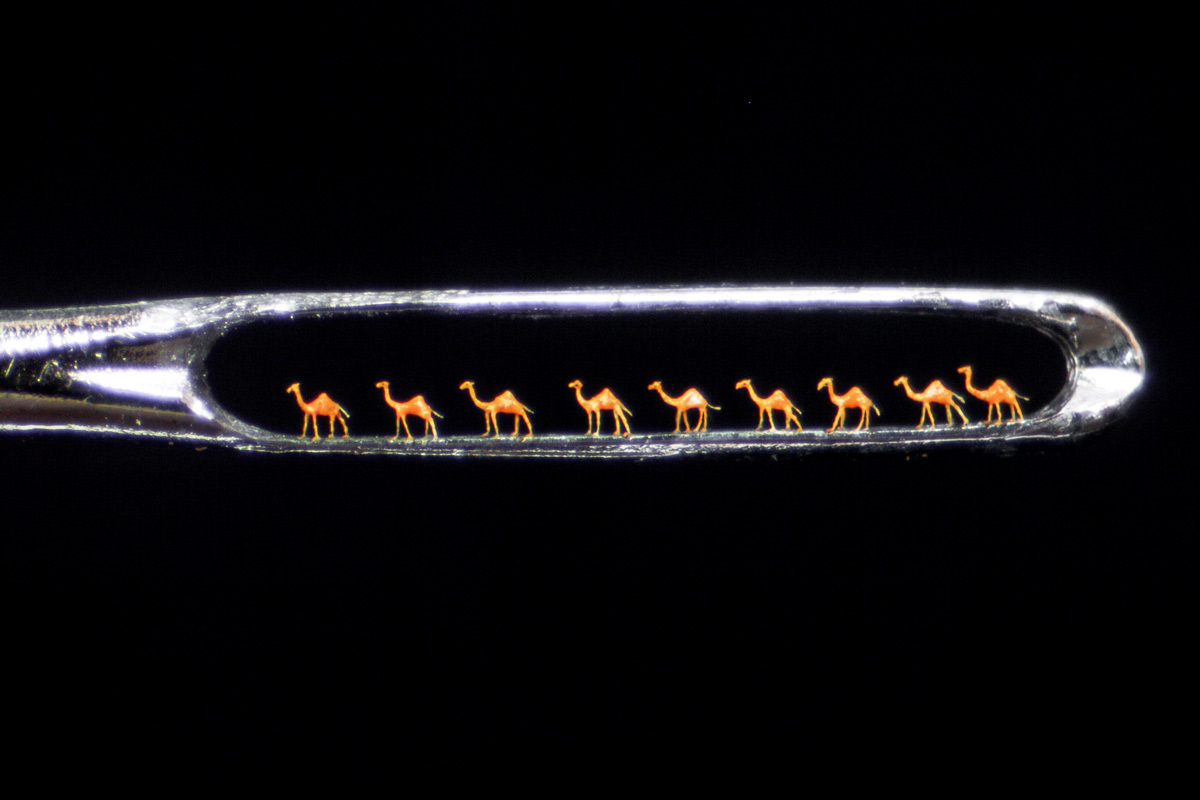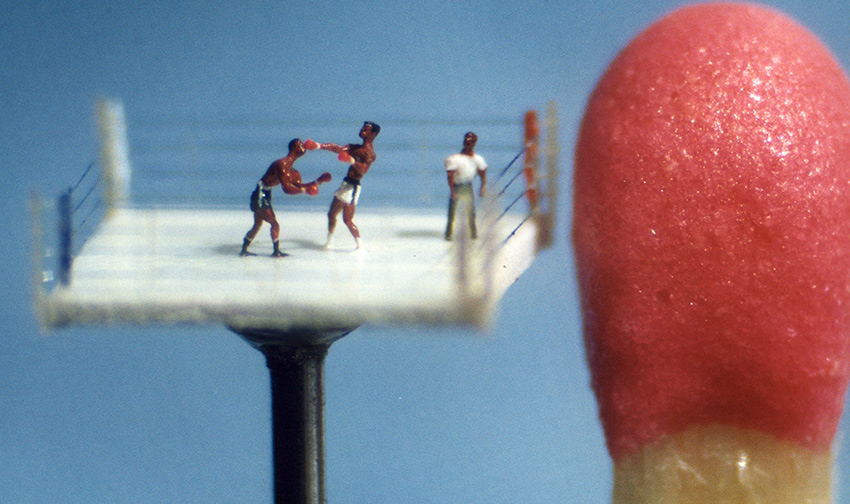
- Inspiring People -
- 5mins -
- 1,165 views
It’s a small world – a VERY small world indeed!
Russian artist Salavat Fidai and Birmingham-based Willard Wigan both create microscopic sculptures so small they fit on the points of pencils and inside the eyes of needles.
Delicate and intricate pencil lead sculptures by Salavat Fidai
Starting with carpenter and art pencils containing thick leads as his ‘stone’, Russian artist Salavat Fidai uses scalpels and craft knives to sculpt miniature renderings of hands, landmark buildings, and characters from popular culture. The delicate process requires a good understanding of how much pressure the lead can withstand.
Micro-sculpture into the head of pencils is a relatively new genre in art
Salavat Fidai is an artist who carves sculptures into the tips of pencils. Two years ago, he quit his high-paying executive job and became a freelance artist. His journey begun as a creative experiment and has grown into a large signature project "Carved pencils" that has brought him international recognition. Many people are already familiar with his work and have added his miniatures and sculptures to their collections.
Micro sculpture into the head of pencils is a relatively new genre in art. It isn’t often attempted as graphite is a very fragile material and the small size of the tip itself makes things complicated. That is why, he believes, there are just a few pencil carvers all over the world, a small number that could be counted on the fingers of one hand.
His fans suggested he create a book about his art. This way he has the opportunity to tell the world about his work and collate prints of all the art pieces he has created to date into a single edition. Thus the idea of THE PENCILBOOK was born – a unique illustrated edition, which Salavat has prepared especially for his fans and followers.
Source: Indigogo

You think THAT’S small?
If you think Salavat’s work is small, then you’ll be truly astonished at the work of (UK) Birmingham-based artist Willard Wigan, MBE. His art is so tiny that each piece sits within the eye of a needle, or on a pin-head, and they are each crafted between heartbeats, to reduce hand tremors! And it doesn’t end there! His artwork gets even smaller than that!
Willard Wigan, from Birmingham, in the UK, has created the world’s smallest piece of artwork – a sculpted gold motorbike INSIDE a hollowed out piece of human stubble. The artwork has been created from a flake of gold from a chain which has been crafted into the shape of a chopper motorcycle and inserted into a hollowed out fragment of stubble from Willard’s chin which measures 0.0035inch. To create the masterpiece Willard had to hold his breath and work between heartbeats!
Watch Wigan at work below.

Willard Wigan, MBE: artist, sculptor, and dyslexic
“It began when I was five years old. I started making houses for ants because I thought they needed somewhere to live. Then I made them shoes and hats. It was a fantasy world I escaped to where my dyslexia didn’t hold me back and my teachers couldn’t criticise me. That’s how my career as a micro-sculptor began.”
Many dyslexics have a remarkable ability to think outside the box; but artist Willard Wigan puts a twist on out-of-the-box thinking by crafting micro sculptures so tiny that many of them could fit inside a box—a very small box. He has recreated scenes from the bible, as well as from pop-culture, such as Homer Simpson holding Bart up in the air by the neck. Wigan’s art often occupy the eye of a needle, or like the Simpsons, the head of a pin. They are so small that they can only be seen with the help of a high-powered microscope.
His ingenuity and unique perspective have earned him respect, appreciation, fame, and, well, a lot of money. Wigan has turned the pieces of a crushed up grain of sand into a polar bear; a bit of a nylon tag into Buzz Aldrin, and the end of a matchstick into the royal couple Prince Edward and Sophie Rhys-Jones, which he entitled, “Edward and Sophie: The Perfect Match.” He’s also crafted Peter Pan, Wendy, Tinker Bell, John and Michael on the tip of a fishing hook, and Alice, the Hare, and the Mad Hatter at a tea party. All characters from books he would struggle to read.
Source: The Yale Centre for Dyslexia and Creativity

“Just because you don’t see it, doesn’t mean that it doesn’t exist.” – Willard Wigan
Wigan didn’t let his dyslexia stop him from succeeding in life and he turned his teachers’ taunts into a challenge: to turn “nothing” into something very special. “Just because you don’t see it, doesn’t mean that it doesn’t exist,” he points out. In a sense, Wigan takes a bunch of what most of us would consider nothing, and turns it into something huge—once it’s viewed through a microscope. He grabs fibres floating in the air and cobwebs from corners to turn them into works of art that are admired around the world.
Check out a video by Ripley’s Believe It Or Not‘s head curator below.



